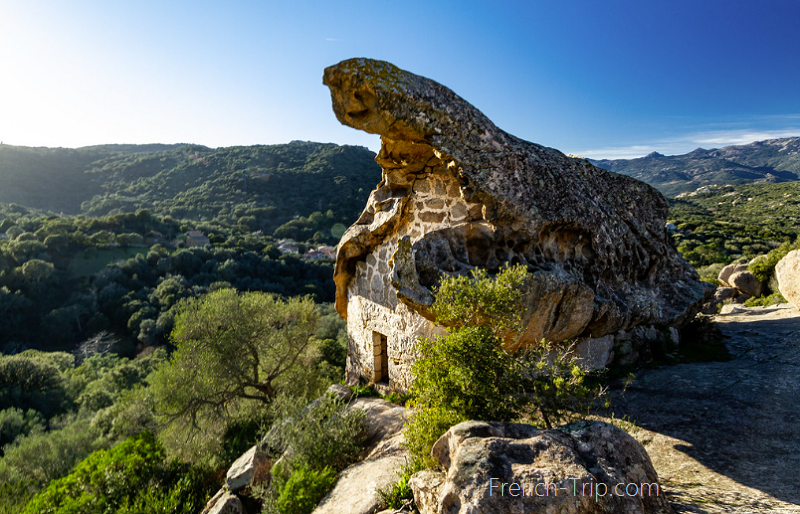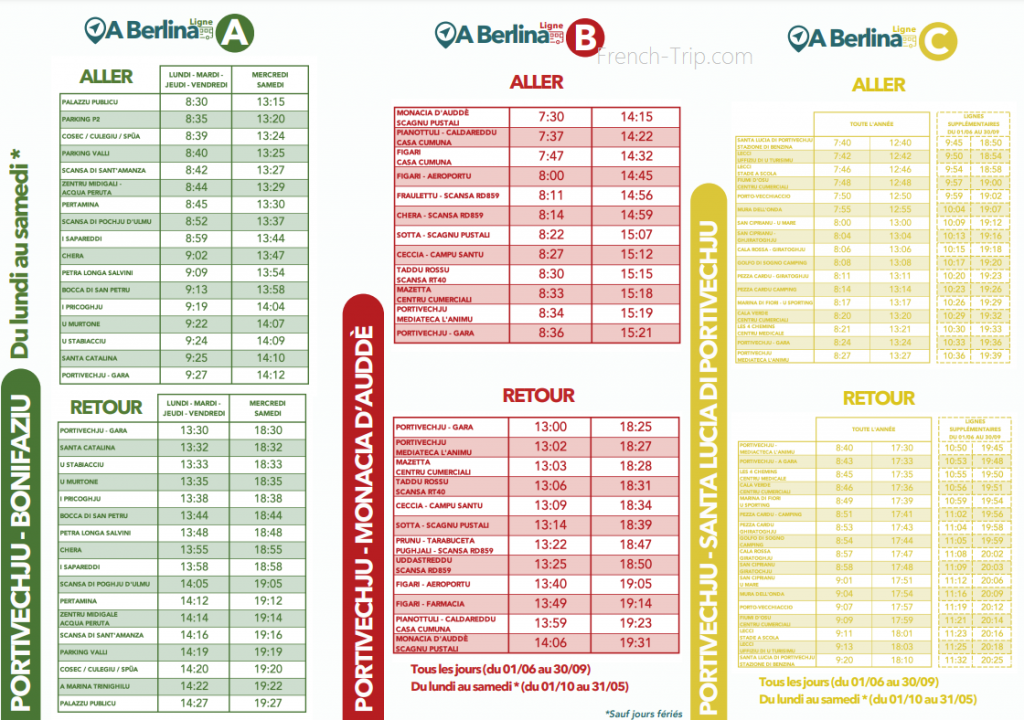Sotta

Sotta — a picturesque village nestled between Porto-Vecchio and Figari in southern Corsica. Known for its charming atmosphere, Sotta stands out for its rich architectural heritage and numerous hamlets.
This unique Corsican commune boasts… 36 hamlets! Corsica’s record! These hamlets are for the most part surnames that lived in these places. Among those hamlets: Vacca, Burìvuli, u Rachinu, Petralonga Filippi, Ciumbulara, Baldaravita, i Fureddi, Salva di Levu, Manichedda, Cardetu, Cancaraccia, Cuò, Jaddinavarghja, Vàlavu, Coghja, Mola, Usciolu, Pastiddosu, Paddaghjolu, Muscatoghu, Purgu, Acqua d’Illici, Canavaghja, Scaledda, Bellavilla, i Canni, Zuccaledda, Chera, Petralonga Salvini, Bergeries de Bitalza, Vinìparu, Razaredda, Chirghinu, Casteddu, Caprionu and finally Bruscaghja.
This southern Corsican village is rich in archaeological sites but paradoxically most of these sites are unexploited.
Every August 28 the procession of Sant’Agustinu takes place in Chera.
What to see in Sotta
Sotta is home to several architectural gems. In the hamlet of Chera, you’ll find a splendid example of southern Corsican architecture, including the Orriu, a magnificent shelter carved into the rock by erosion, once used by shepherds during their seasonal migrations. The area also holds prehistoric remains, such as the archaeological site of Tappa, showcasing its rich history.
The village is dotted with chapels of historical significance, including San Martinu, located in the Sotta cemetery, the ruins of Sant’Agostino de Chera, and Santa-Ursula in Petralonga Filippi, the twin of San Quilicu de Montilati. Near Castello Point once stood the castle of the despotic lord Orso Alamanno, who ruled the Fretu plain during the Middle Ages. After his assassination, the castle was burned down by the villagers in celebration of their freedom.
In addition to its historic sites, Sotta offers charming spots for culinary breaks, such as local farmhouse inns.
Celebrate San Martinu with the Sottais
On November 11th, Sotta celebrates its patron saint, San Martinu, with festive gatherings that reflect the region’s rural traditions. This event is a wonderful opportunity to experience the local culture and explore the scenic beauty of Sotta. With its characterful hamlets, remarkable architecture, and vibrant local festivities, a visit to Sotta offers an authentic Corsican experience in the heart of this idyllic region.
Main attractions
The region of Sotta has been inhabited for a long time, as evidenced by the archaeological remains found in the area, dating back to prehistoric times. There are also various “Oriu” caves, granite formations reinforced by walls, which once served as primitive dwellings and later as hay or grain storage. These can be seen in hamlets such as Chera, Canni, Saparacce, and Cardettu.
The Torréen culture was present on the Cagna plateau, and the area holds significant megalithic remains, particularly in the Avretu plain, a key passage between the two southern coasts, linking the sea and the mountains.
17 archaeological sites have been catalogued by the D.R.A.C. (Regional Directorate of Cultural Affairs), but many others, lesser-known, are worth identifying by specialists.
Currently, Sotta’s archaeological heritage is not exploited for tourism, except for the Tappa site near the Ceccia border, dating back to around 1900 BC. It features a cyclopean enclosure surrounding a village with a monumental torre (tower).
Unfortunately, most other sites are inaccessible, such as:
- The archaeological area of Punta Campana in Sotta Village
- The Neolithic site of Sardani in Sotta Village
- The Monte d’Aguja archaeological zone in Sotta Village
- The Neolithic sites of Cardettu
- The Vallebona archaeological area in Salva di Levu
- The Petra Longa archaeological zone between Petra Longa Salvini and Purgu
- The medieval site of Sant’Agostinu in Chera
- The Neolithic site of Casteddu de Conca in Cancaraccia
The archaeological map compiled by the D.R.A.C. lists these remains, which are registered in the national archaeological database.
Architectural Heritage
Several medieval castles and chapels have been discovered, often in ruins:
- Castellu di Conca, located on a hill overlooking the Avretu plain, is believed to be the castle of Ursu Alamanu, described as a center of worship.
- At the foot of this hill, there was a system of dwellings and the Sant’Andria chapel from the 10th century, which is currently undergoing restoration.
Other notable chapels include San Martinu at the Sotta cemetery and Sant’Ursula in Pietra Longa Filippi, now in ruins and considered the twin of San Quilicu de Montilati.
In Chera, the Sant’Agustinu chapel, built in the 7th century and restructured in the 10th century, has been classified as a historic monument since 1980. Originally built from pink granite and later limestone, it once supported a monk who lived off his livestock and garden while performing religious services.
Bitalza Shepherd Huts
On the Cagna plateau, there is a hidden gem of mountain architecture: the Bitalza shepherd huts. About fifteen of these have been restored by their owners and now serve as vacation homes. Two chapels were built here, offering panoramic views and an exceptional atmosphere. An association has been formed to focus on preserving the plateau and fire prevention.
The plateau has three springs, one of which is said to be thermal, and a clay deposit that shepherds used to insulate their shelters.
Get in
Bus A Berlina B connects Sotta with Porto-Vecchio and Figari. One-way ticket costs 2 € (as of 2024), free under 18 years old. There are just 2 buses a day. In low season (1st of October – 31st of May) no buses on Sundays and holidays.
Sotta on Corsica’s map:
→ Back to Corsica travel guide
Archives
Calendar
| M | T | W | T | F | S | S |
|---|---|---|---|---|---|---|
| 1 | 2 | 3 | 4 | 5 | 6 | 7 |
| 8 | 9 | 10 | 11 | 12 | 13 | 14 |
| 15 | 16 | 17 | 18 | 19 | 20 | 21 |
| 22 | 23 | 24 | 25 | 26 | 27 | 28 |
| 29 | 30 | 31 | ||||
